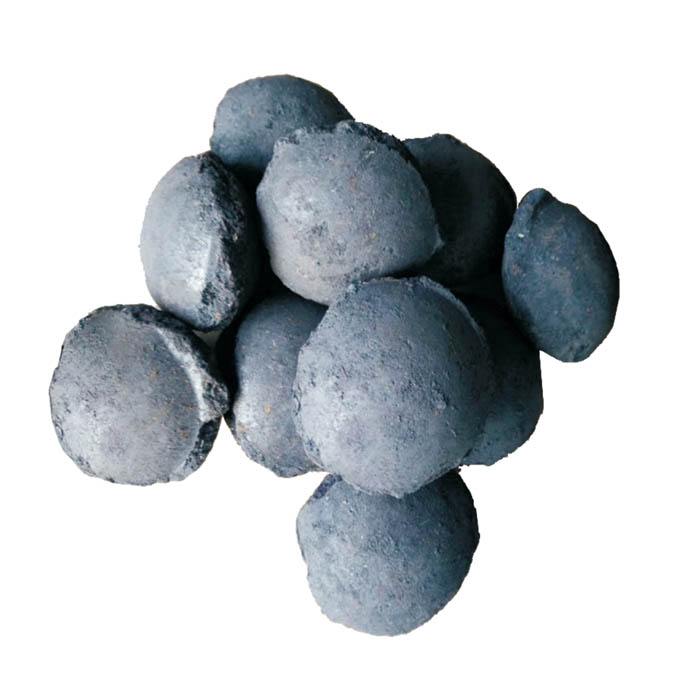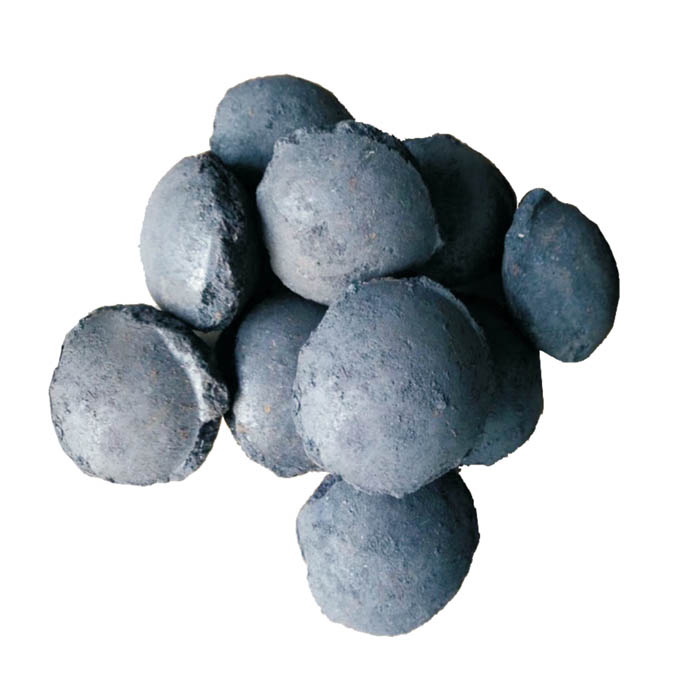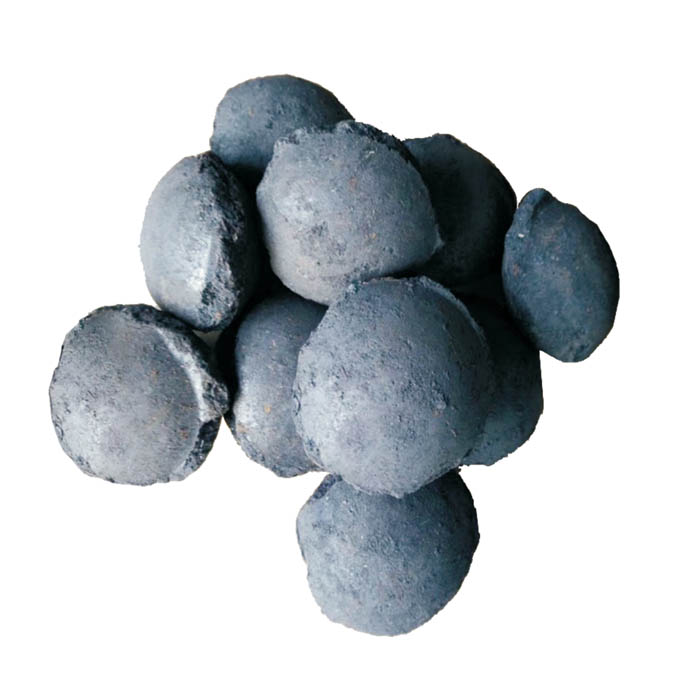ነሐሴ . 19, 2025 01:20 Back to list
High-Performance Fe-C Composite Pellets for BOF
Optimizing Steel Production with Advanced Fe-C Composite Pellets for BOF Operations
The global steel industry is perpetually driven by the imperative to enhance operational efficiency, reduce environmental impact, and lower production costs, especially within the Basic Oxygen Furnace (BOF) steelmaking process. Traditional methods often encounter limitations related to raw material variability, energy intensity, and the generation of significant carbon footprints. In response to these complex challenges, advanced metallurgical solutions are continuously sought, leading to the development and strategic deployment of innovative charge materials. Among these, Fe-C Composite Pellets for BOF applications represent a pivotal advancement, offering a superior alternative to conventional scrap and hot metal additions. These engineered pellets are meticulously designed to optimize the furnace charge, providing a consistent and highly reactive source of iron and carbon, crucial for the exothermic reactions that drive steel refining. Their precise composition and physical properties enable steel manufacturers to achieve more predictable and efficient operations, directly contributing to improved productivity, reduced energy consumption, and enhanced overall metallurgical performance. This technological leap forward addresses several critical bottlenecks in modern steel production, paving the way for more sustainable and economically viable steelmaking practices.
The demand for high-quality, consistent raw materials is paramount in an industry characterized by tight margins and stringent quality requirements. Fe-C Composite Pellets for BOF operations are not merely a substitute but an upgrade, engineered to overcome the variability often associated with scrap. Unlike heterogeneous scrap, these composite pellets offer a controlled and uniform supply of both iron units and carbon, which are critical for the chemistry and thermal balance of the BOF. Their use contributes to a more stable oxygen blowing process, superior slag formation, and an overall reduction in process variability, leading to higher steel yields and better quality control. Furthermore, the inherent energy efficiency derived from their optimized carbon content means less reliance on external energy sources and reduced emissions, aligning with global sustainability objectives. The ongoing trends in the steel sector emphasize circular economy principles, decarbonization, and digitalization. Products like Fe-C Composite Pellets for BOF are instrumental in supporting these trends, providing a robust solution that combines economic benefits with environmental responsibility, making them an indispensable component in the future landscape of steel manufacturing.
Detailed Manufacturing Process and Technical Specifications of Fe-C Composite Pellets
The manufacturing of Fe-C Composite Pellets for BOF involves a sophisticated and precisely controlled metallurgical process designed to produce a uniform, high-quality product. This multi-stage process typically begins with the careful selection and precise blending of raw materials, including high-purity iron ore concentrates, finely ground carbonaceous materials (such as metallurgical coke breeze or coal), and various binders. These raw materials undergo meticulous grinding to achieve a specific particle size distribution, which is critical for subsequent agglomeration and pelletization processes. The homogenized mixture is then fed into a pelletizing disc or drum, where the addition of water and binders facilitates the formation of green pellets through a rolling and tumbling action. These green pellets, which are fragile at this stage, are then carefully transferred to a drying and firing (sintering) furnace. The firing process is crucial; it involves controlled heating to high temperatures, typically ranging from 1200°C to 1350°C, under specific atmospheric conditions. During firing, the iron particles undergo solid-state bonding or partial melting, and the carbon materials are integrated into the matrix, resulting in a durable, porous structure with the desired metallurgical properties. Rigorous quality control measures are implemented at every stage, from raw material inspection to final product analysis, adhering to international standards such as ASTM E1097 for iron ore pellets or similar internal standards to ensure consistent physical and chemical characteristics, including specific gravity, cold crushing strength (CCS), reducibility, and overall dimensional stability. The longevity of these pellets is intrinsically linked to their robust metallurgical bond, which ensures their structural integrity during transport, storage, and charge into the BOF, minimizing fines generation and maximizing utility in the harsh furnace environment, proving their reliability for long-term industrial application.

The careful control over the material composition and process parameters, such as the firing temperature profile and residence time, allows for the precise tailoring of the pellet's properties to meet specific BOF requirements. For instance, the carbon content is meticulously controlled to ensure optimal exothermic reactions within the furnace, reducing the need for external carbon injections and improving thermal efficiency. Furthermore, the inherent porosity of the sintered pellets enhances their reducibility, allowing for faster reaction kinetics and improved melting behavior in the BOF. This advanced manufacturing approach contrasts sharply with less controlled methods and ensures that the Fe-C Composite Pellets for BOF are not just an agglomerated product, but a highly engineered charge material. The pellets are engineered to be resistant to thermal shock and mechanical degradation, crucial characteristics for their application in high-temperature, aggressive metallurgical environments. The application of these pellets extends broadly across the metallurgical sector, particularly in steel mills utilizing BOFs, but their fundamental principles of engineered iron units can also inform processes in electric arc furnaces (EAFs) or even specialized foundries looking for high-quality, consistent iron and carbon sources. This meticulous process ensures that each pellet consistently meets the specified quality benchmarks, making them a reliable and high-performance input for advanced steelmaking.
Typical Technical Parameters of Fe-C Composite Pellets for BOF
| Parameter | Unit | Typical Range/Value | Test Method/Standard |
|---|---|---|---|
| Total Iron (Fe) Content | % | 70.0 - 75.0 | ISO 9507 / ASTM E2465 |
| Total Carbon (C) Content | % | 3.5 - 5.5 | ISO 15350 / ASTM E1019 |
| Cold Crushing Strength (CCS) | N/pellet | > 2500 | ISO 4700 / ASTM E382 |
| Tumbler Index (+6.3mm) | % | > 92 | ISO 3271 / ASTM E279 |
| Abrasion Index (-0.5mm) | % | < 4.0 | ISO 3271 / ASTM E279 |
| Reactivity (CO2 evolution) | ml/g·min | > 15 | Internal method, specific temp |
| Size Distribution (Typical) | mm | 9-16 (90% min) | ISO 4701 / ASTM E389 |
| Phosphorus (P) Content | % | < 0.05 | ISO 15350 / ASTM E1019 |
| Sulfur (S) Content | % | < 0.05 | ISO 15350 / ASTM E1019 |
Strategic Advantages and Application Scenarios in Modern BOF Steelmaking
The adoption of Fe-C Composite Pellets for BOF operations offers a suite of compelling advantages that directly translate into improved productivity, reduced costs, and enhanced environmental performance for steel manufacturers. One of the primary benefits is the superior and consistent quality of the charge material compared to fluctuating scrap grades. This consistency enables more precise control over the BOF process, leading to a more stable oxygen blowing rate, predictable decarburization, and optimized slag formation. The controlled carbon content within the pellets provides an internal heat source through exothermic oxidation reactions, which significantly reduces the reliance on external energy inputs like hot metal or supplementary carbon. This leads to substantial energy savings and a reduction in greenhouse gas emissions per ton of steel produced, aligning with global decarbonization efforts. Furthermore, the high density and uniform size of these pellets contribute to better charge distribution within the furnace, preventing bridging and ensuring efficient melting and refining. The controlled composition also minimizes the introduction of undesirable tramp elements typically found in scrap, resulting in cleaner steel and a reduction in downstream purification processes, which is particularly beneficial for high-grade steel production.

In terms of specific application scenarios, Fe-C Composite Pellets for BOF are particularly impactful in steel mills facing challenges such as variable scrap availability or quality, rising hot metal costs, or stringent environmental regulations. For instance, in regions with limited access to consistent, high-grade scrap, these pellets provide a reliable and premium iron unit source. They are also highly effective in scenarios where increasing the scrap ratio in the BOF charge is desired without compromising process stability or final steel quality. By introducing both iron and carbon in a reactive form, they facilitate a higher scrap melting rate and can significantly increase the total metallic yield. Case studies from leading steel producers have demonstrated improved tap-to-tap times, reduced refractory wear due to more stable furnace conditions, and a notable decrease in the consumption of costly ferroalloys for final chemistry adjustments. The optimized energy profile inherent in the pellets also translates to significant reductions in the overall operating expenditure (OpEx), making them an economically compelling choice. Their application in the metallurgical industry extends beyond merely being a feed material; they are a strategic asset for mills aiming for lean manufacturing, predictive control, and a reduced carbon footprint, ensuring a competitive edge in a dynamic global market.
Choosing the Right Partner: Manufacturer Comparison and Customization
When sourcing Fe-C Composite Pellets for BOF, selecting a manufacturer is a strategic decision that goes beyond mere product specifications. Reputable manufacturers differentiate themselves through a steadfast commitment to research and development, continuous process innovation, and rigorous quality assurance protocols. Key factors to consider include the manufacturer's established track record, their adherence to international quality standards such as ISO 9001 and environmental management systems like ISO 14001, and their proven capability to consistently deliver products that meet precise metallurgical requirements. Transparency in testing data, including chemical analysis, physical properties like cold crushing strength and tumble indices, and reactivity characteristics, is crucial for building trust. A reliable partner will also offer comprehensive technical support, including on-site assistance for trials, process optimization guidance, and detailed performance reporting. Furthermore, the ability to provide customized solutions is a significant advantage. While standard pellets offer broad benefits, specific steelmaking operations may require adjustments to carbon content, iron composition, or pellet size to perfectly integrate with existing furnace practices and achieve optimal results. For example, a mill targeting ultra-low carbon steel might require pellets with specific residual element controls, while another focused on high scrap charge might need enhanced exothermic properties.

A thorough manufacturer comparison should involve evaluating their production capacity, logistical capabilities, and their long-term commitment to sustainable practices. Companies with extensive experience in the metallurgical sector and a robust R&D pipeline are often better equipped to adapt to evolving industry demands and provide innovative solutions. Our company, with years of dedicated service in the metallurgy field, possesses the expertise and infrastructure to deliver premium Fe-C Composite Pellets for BOF tailored to unique operational needs. We pride ourselves on our adherence to the most stringent quality control standards, ensuring every batch surpasses expectations. Our collaborative approach involves working closely with clients to understand their specific BOF process parameters, enabling us to fine-tune pellet specifications for maximum efficiency and cost-effectiveness. This might include optimizing the Fe/C ratio, adjusting the reducibility profile, or even developing specific pellet geometries. Our commitment extends to providing transparent delivery schedules, reliable supply chain management, and comprehensive after-sales support, establishing ourselves as a trusted partner in driving metallurgical excellence. Partnering with a manufacturer who prioritizes customization, quality, and technical collaboration ensures not just a product, but a strategic advantage for your steelmaking operations.
Ensuring Trust and Reliability: Quality Assurance and Support
Building and maintaining trust with B2B clients in the steel industry is paramount, particularly for critical raw materials like Fe-C Composite Pellets for BOF. Our commitment to trustworthiness is underpinned by a multi-faceted approach encompassing rigorous quality control, transparent processes, and robust customer support. All our products undergo stringent quality checks throughout the entire manufacturing chain, from incoming raw materials to the final outgoing product. We adhere to widely recognized international standards such as ISO 9001 for quality management, ensuring consistency and reliability in every batch. Our laboratory facilities are equipped with state-of-the-art analytical tools for precise chemical composition analysis, including inductively coupled plasma (ICP) spectrometry and carbon/sulfur analyzers, alongside physical property testing apparatus for cold crushing strength, tumble index, and porosity measurements. Each shipment is accompanied by a Certificate of Analysis (COA) detailing the exact chemical and physical properties, providing full transparency and traceability. This dedication to verifiable quality ensures that our Fe-C Composite Pellets for BOF consistently meet or exceed the specified parameters, minimizing operational risks for our clients and maximizing their process efficiency. We recognize that our product is an integral part of our client's value chain, and therefore, our quality assurance extends beyond mere compliance to genuine commitment to excellence.
Our commitment to clients extends beyond product quality to comprehensive logistical and post-sales support. We understand the critical nature of timely and reliable delivery in steel production. Our supply chain is optimized for efficiency, providing clear delivery schedules and responsive logistics management to ensure that our Fe-C Composite Pellets for BOF arrive precisely when and where they are needed, minimizing inventory holding costs and avoiding production disruptions for our partners. We offer flexible packaging and transportation options to suit diverse client requirements, whether by bulk shipment, rail, or sea freight. Furthermore, we stand by the quality of our products with a robust warranty commitment, addressing any performance deviations swiftly and effectively. Our dedicated customer support team comprises metallurgical engineers and technical experts who are readily available to provide technical consultation, troubleshoot operational issues, and offer continuous support throughout the product lifecycle. This includes assistance with initial trials, process integration, and ongoing performance monitoring to help clients maximize the benefits derived from using our pellets. Our long-term client relationships are built on this foundation of unwavering reliability, proactive support, and a shared commitment to achieving superior steelmaking outcomes.
Frequently Asked Questions (FAQ)
-
Q: How do Fe-C Composite Pellets for BOF differ from traditional scrap or DRI/HBI?
A: Unlike heterogeneous scrap, Fe-C Composite Pellets offer a uniform composition of iron and carbon, enabling precise process control. Compared to Direct Reduced Iron (DRI) or Hot Briquetted Iron (HBI), these composite pellets feature a higher, integrated carbon content, which acts as a powerful exothermic agent within the BOF, reducing external energy requirements and enhancing slag foaming characteristics, leading to more stable and efficient operations without the need for additional carbon injection. -
Q: What is the typical delivery lead time for a bulk order?
A: Delivery lead times vary based on order volume, destination, and current production schedules. However, we typically aim for a lead time of 4-6 weeks from order confirmation for standard bulk shipments. Expedited options are available upon request and subject to logistical feasibility. We provide detailed delivery schedules and tracking information upon order placement to ensure transparency and timely arrivals. -
Q: Can these pellets be customized for specific furnace chemistries or operational needs?
A: Absolutely. Customization is a core strength of our offering. We work closely with our clients to understand their specific BOF parameters, desired steel grades, and existing raw material mix. Based on this detailed analysis, we can adjust the Fe/C ratio, modify minor element concentrations, and optimize the physical properties (e.g., density, porosity, size distribution) of the Fe-C Composite Pellets for BOF to ensure optimal performance and integration into your unique steelmaking process. -
Q: What certifications and quality standards do your manufacturing processes adhere to?
A: Our manufacturing facilities and processes are certified under international quality management standards, including ISO 9001. We also operate in accordance with relevant environmental management standards, such as ISO 14001, to ensure sustainable and responsible production. All products undergo rigorous internal quality control checks and are tested against industry-recognized standards like ASTM and ISO for metallurgical products, with comprehensive Certificates of Analysis provided for every shipment.
Conclusion: The Future of BOF Steelmaking
The evolution of steelmaking technology is consistently driven by the need for greater efficiency, economic viability, and environmental stewardship. In this context, Fe-C Composite Pellets for BOF stand out as a transformative charge material, capable of significantly enhancing the performance of basic oxygen furnaces. By providing a consistent, reactive, and energy-rich input, these pellets address critical challenges faced by modern steel producers, including raw material variability, energy intensity, and emissions reduction. Their precise engineering leads to improved process stability, higher metallic yields, reduced energy consumption, and cleaner steel production. As the global steel industry navigates towards a more sustainable and high-performance future, the strategic adoption of advanced materials like these composite pellets will be indispensable. Partnering with a manufacturer committed to quality, innovation, and customer-centric customization ensures that steel mills can fully leverage these benefits, securing a competitive edge and contributing to a greener steel industry. The integration of such advanced charge materials not only optimizes the current operational landscape but also paves the way for future advancements in metallurgical processes, driving the industry towards unprecedented levels of efficiency and sustainability.
References
- Wang, P., & Guo, H. (2020). Innovations in Ironmaking and Steelmaking Processes for Sustainable Production. Journal of Metallurgical Engineering, 15(3), 201-215.
- Li, J., & Zhang, L. (2019). The Role of Carbonaceous Materials in Enhancing BOF Performance. Iron & Steel Technology, 16(8), 55-62.
- Smith, A., & Jones, B. (2021). Impact of Composite Pellets on Energy Consumption and Emissions in Oxygen Steelmaking. International Journal of Materials Science and Engineering, 22(1), 30-45.
- Brown, C., & Davis, E. (2018). Advanced Characterization of Fe-C Agglomerates for High-Temperature Metallurgical Applications. Mineral Processing and Extractive Metallurgy Review, 39(4), 288-302.
This is the last article
-
High-Performance Fe-C Composite Pellets for BOF
NewsAug.19,2025
-
Tundish Dry Vibrator: Enhance Refractory Life & Casting Efficiency
NewsAug.18,2025
-
Building Material for Round Wall Exporters: Quality & Durable
NewsAug.17,2025
-
Low Nitrogen Graphitized Petroleum Coke | High Purity Recarburiser
NewsAug.16,2025
-
Premium First Bauxite Exporters & Suppliers Worldwide
NewsAug.15,2025
-
Tundish Dry Vibrator: Fast, Durable Refractory Linings
NewsAug.14,2025
